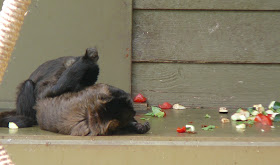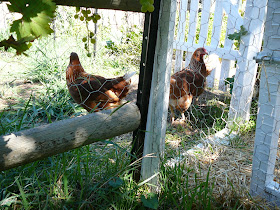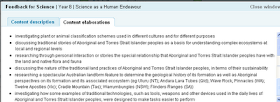There is a malicious rumor stalking the geocybersphere that overworked professors, desperate not to be seen using wikipedia as a source, have decided to grading-related research using twitter. As a twit-free blogger, I am not in a position to determine the veracity of these reports, but a little birdie told me that non-climatologist rockheads were looking for information on the greenhouse gas properties of ozone.
Ozone absorbs IR in a portion of the spectra that is generally not absorbed by many other gasses (figure 1, figure 2), and thus is a greenhouse gas. More importantly for those of us who have given up on this planet and are looking for the next best thing, the ozone IR peak is considered to be a prime candidate for exobiological IR spectroscopy, which will be great once we find a terrestrial planet cool enough to host water.
 figure 1: Ozone FTIR spectra (from here).
figure 1: Ozone FTIR spectra (from here). Figure 2. Terrestrial IR emittance. Valleys indicate atmospheric adsorbtion. Note that O3, H2O, and CO2 have very different atmospheric abundances. click image for more readable version. From here.
Figure 2. Terrestrial IR emittance. Valleys indicate atmospheric adsorbtion. Note that O3, H2O, and CO2 have very different atmospheric abundances. click image for more readable version. From here.In the mean time, the effects of ozone on the radiation balance of this washed-up blue dot are available in a source only slightly less controvercial than twitter or wikipedia:
The IPCC fourth assessment report.
Section 2.3.6.1 covers stratospheric ozone (the 'ozone layer').
Section 2.3.6.2 covers tropospheric ozone (smog & other air pollution ozone, incl. lightning).
The tropospheric ozone issue is complicated by the fact that most ozone-producing processes also produce CO and the various nitrous oxides (NOx). But the GHG contribution from tropospheric ozone appears to be moderate and positive (a mean estimated forcing of +0.35 W/m
2, with asymmetrical error envelope of +0.25 to +0.65 W/m
2)
The stratospheric ozone calculation is poorly explained. They don't actually give the total forcing of the pre-CFC (intact) ozone layer, the current one, and use the difference. Rather, they try to estimate the change in forcing directly, including the change in all the chemicals that cause ozone destruction (which are also GHG's). This is confusing, since those gasses were already addressed in section
2.3.4: Montreal Protocol Gasses. So the Montreal gasses (or at least the sink that is the ozone destruction reaction) appear to be counted twice. Their final estimate is that ozone depletion has had a cooling effect, with a forcing of -0.05 ± 0.1 W/m
2.
Note that the baseline year for stratospheric ozone is 1979, which may or may not be appropriate for pre-industrial levels.
For some reason ozone is not listed in
table 2.1, but based on these numbers, it should be somewhere between the 2nd and 5th most important gas in terms of total anthropogenic radiative forcing.
What I want to know (and is not addressed in this part of the IPCC report) is whether or not Antarctic ozone depletion is what has allowed that part of the planet to warm much more slowly than everywhere else over the past 30 years. Bueller?
(Addendum)
Paranoid readers may think that wanting to know the total forcing of the stratospheric ozone layer is a precursor to a mad geoengineering scheme that will eradicate all terrestrial life in exchange for 50 more years of coal profits. That is always an option, of course. But there is a far more interesting application relating to a much more exciting period of geologic time.
In the Neoproterozoic, atmospheric oxygen is thought to have increased rapidly as the ocean transitioned from anoxic at depth to entirely oxidized. Stratospheric ozone is formed from atmospheric oxygen. So I am wondering if the greenhouse contribution from a growing ozone layer would be strong enough to be a contributing factor to the end of the Cryogenean glaciations at the Ediacaran/Cryogenean boundary. Anyone have any idea if that's plausible?























